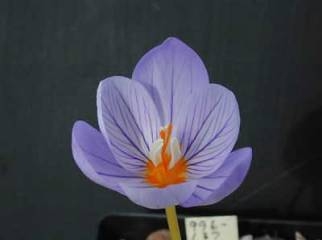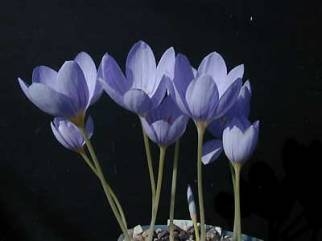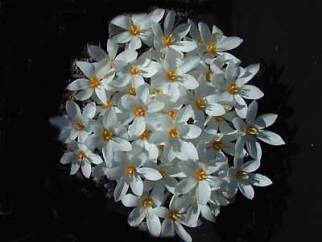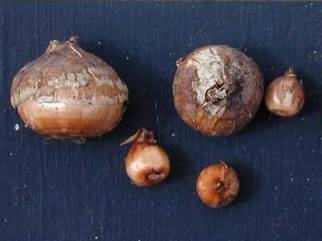| Flowering Time |
Autumn |
|
Distribution |
Macedonia; Serbia; S Bulgaria; N Greece; Turkey |
|
Native Climate |
Mediterranean |
|
Wild Habitat |
Damp turf and in thin woodland or scrub |
|
Distinctive Features |
Flowers pale to mid lilac with darker veins. Anthers white, filaments hairy. Corm tunic coriaceous splitting into rings at the base |
|
Closest Relatives |
|
|
Cultivation Requirements |
Tolerant of some summer moisture. Grown outside without protection in UK gardens given well drained soil |
|
Availability |
Widely available from specialist suppliers and in commerce* |
An easy and attractive autumn flowering species, with a stronger tube than the related Crocus speciosus. This makes it a better garden plant, being less prone to flop over. There is a very large flowered form, possibly of hybrid origin, called 'Zephyr'. This has greyish lilac flowers.
*In UK garden centres some (or more) of the stock offered (of Dutch origin) is unfortunately mixed or hybridised with Crocus speciosus. Only a proportion of the corms will produce flowers of the appearance below, the rest appear to be Crocus speciosus.

A form raised from wild collected seed

A clone available from UK specialist bulb suppliers.

White form. Vigorous and increases in the garden here.

Corms showing papery tunic with some evidence of basal rings.
Sign up for our newsletter to receive our monthly update direct to your inbox. Featuring our latest articles and news.
Built by Atomic Smash

